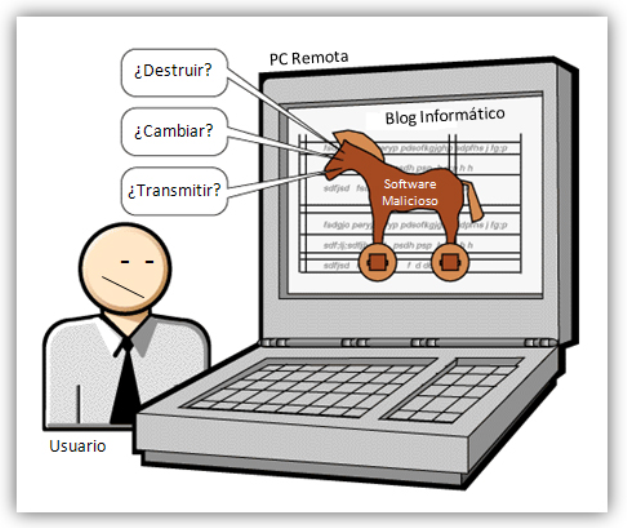Computer Curiosities: Trojan Horses

Many terms used in computing are quite curious, perhaps because, being a relatively new science, it arrived late to the word distribution. Additionally, computer program designers often resort to terms they deem simpler or easier for users to remember.
The Spanishization or translation of some of these originally English words, along with their original meanings, can also be intriguing and sometimes even amusing.
Let’s take an example: the term «trojan horse,» in Spanish «caballo troyano,» or simply «caballo de Troya,» is used to refer to malicious programs that infiltrate computers disguised as authentic applications or embedded within them to execute harmful actions.
The name harks back to the Iliad, Homer’s famous epic poem, where the Greeks pretended to lift the siege of the city of Troy, which had resisted for ten long years. A small group of warriors, led by the cunning Odysseus (Ulysses), hid inside a wooden horse left at the city gates.
The Trojans made the mistake of bringing the horse inside the city, and in the predawn hours, the king of Ithaca and his soldiers caught the entire city, asleep and drunk from celebrating what they thought was a victory. Such a dirty trick mirrors the actions executed by computer Trojan horses.
The origin of these malicious codes can be traced back to the time when computer programs were distributed on 5.25-inch disks, and producers included sets of instructions aimed at «punishing» those who attempted to duplicate the disk’s content, also known as a floppy disk.
You could use the program as long as the support remained intact, but if you executed the «copy» command, farewell information, both on the original and the destination disk.
Later, as those who interact with computers, and now smartphones, are well aware, Trojan horses—or simply trojans—have evolved into other functions, including stealing information or money, extorting victims, or simply causing harm for no reason other than the programmer’s pleasure.
An internet specialist site highlights the following as the most «terrible»:
ILOVEYOU, which began circulating in 2000, hiding in electronic messages with the subject line matching its name. Upon opening, it sent copies to everyone in the user’s contact list and overwrote computer files.
Zeus, from 2007, aimed at stealing information and bank credentials by copying keystroke logs and form entries.
CryptoLocker, from 2013, encrypts user files and demands a ransom in money for restoring access.
Emotet, from 2014, originally a banking trojan, evolved to distribute other malware and enable cybercriminals to install applications on users’ computers.
Dyre, also from the same year, also known as Dyreza, designed to steal banking and personal credentials from Windows computers.
BlackEnergy, released in 2015. Initially a tool for automating mass attacks, such as data theft, server blocking, and distribution of other malicious programs, it is capable of causing an entire country’s power grid to collapse.
Cybercriminals continue to program computer routines to steal, spy, or cause other damages, and these now affect not only Windows users but also users of other operating systems, including those that power mobile phones.
Protecting oneself is indispensable, and for that, it’s best to have detection and removal programs for these harmful algorithms installed and updated on our devices.
Translated by Luis E. Amador Dominguez



